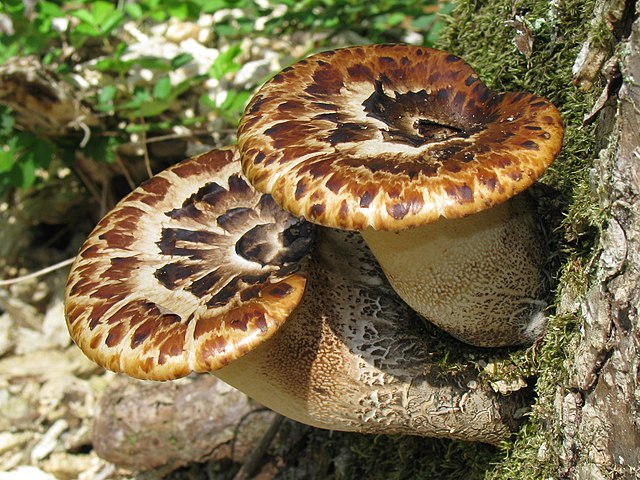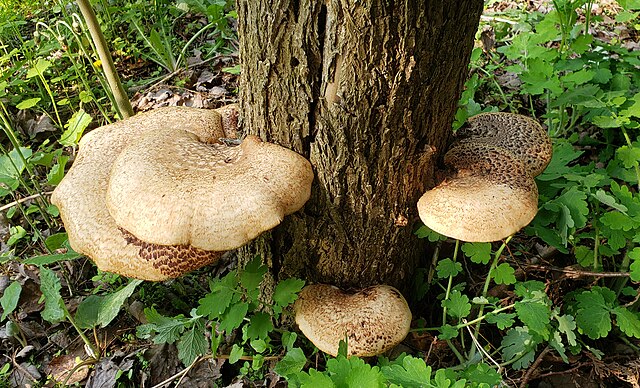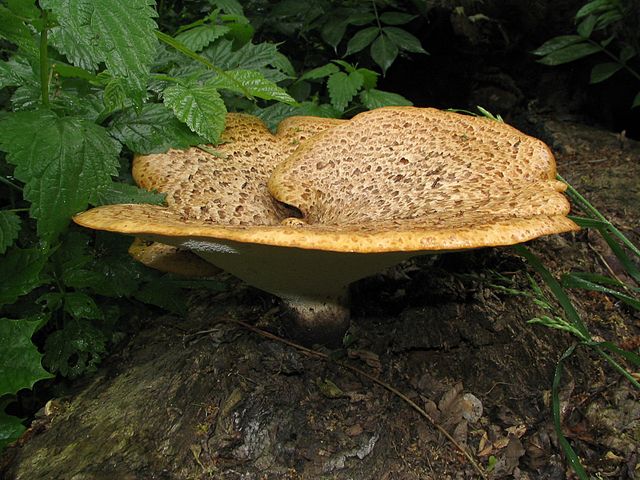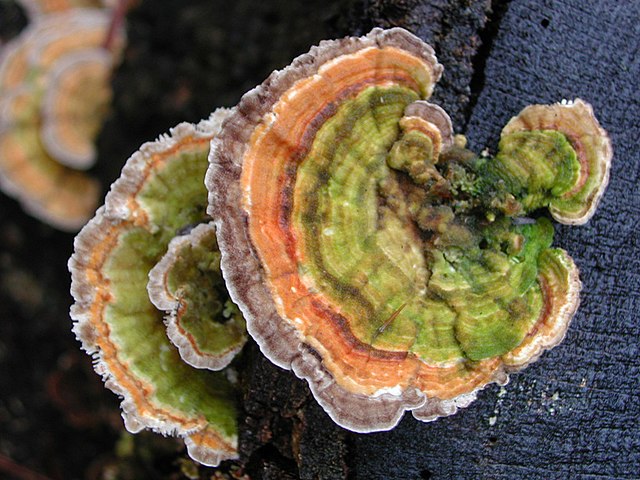Cerioporus squamosus aka Polyporus squamosus is a basidiomycete bracket fungus, with common names including dryad's saddle and pheasant's back mushroom. It has a widespread distribution, being found in North America, Australia, Asia, and Europe, where it causes a white rot in the heartwood of living and dead hardwood trees. The name "dryad's saddle" refers to creatures in Greek mythology called dryads who could conceivably sit and rest on this mushroom, whereas the pheasant's back analogy derives from the pattern of colors on the bracket matching that of a pheasant's back.
Cerioporus squamosus
Dryad's saddle (Polyporus squamosus)
Forming "shelves" on the side of a tree
Polyporus squamosus
Polypores are a group of fungi that form large fruiting bodies with pores or tubes on the underside. They are a morphological group of basidiomycetes-like gilled mushrooms and hydnoid fungi, and not all polypores are closely related to each other. Polypores are also called bracket fungi or shelf fungi, and they characteristically produce woody, shelf- or bracket-shaped or occasionally circular fruiting bodies that are called conks.
Polypores (Ganoderma sp.) growing on a tree in Borneo
Trametes versicolor, a colorful bracket fungus, commonly known as turkey tail
A bracket fungus (Pycnoporus sp.) with a tough, woody cap
The blushing bracket showing the red bruising, which is one identification characteristic








